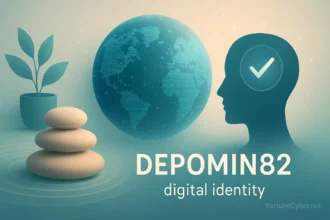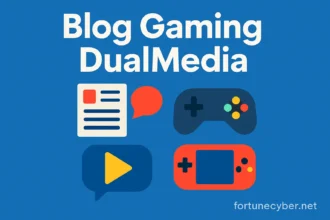In the ever-evolving digital landscape, new concepts and frameworks often appear that spark curiosity and debate. One such term gaining attention is fivebpeol. At first glance, the word seems unfamiliar, even unusual. Yet behind it lies an emerging idea that has the potential to influence the way businesses, individuals, and organizations approach strategy, optimization, and innovation.
The concept of fivebpeol is still in its early stages, but its growing presence in online discussions, niche blogs, and thought-leadership articles suggests that it is more than just a fleeting buzzword. This article explores fivebpeol in depth: what it means, how it is being interpreted, the principles or pillars it is associated with, and how it may shape the future of modern systems and processes.
What Does Fivebpeol Mean?
The term fivebpeol does not have a single fixed definition. Instead, it is being interpreted differently depending on the context in which it is used. Some analysts suggest it may have originated as a stylized way of saying “five people,” while others treat it as an acronym or conceptual framework. What unites these interpretations is that fivebpeol is often described as a model for balance, growth, and adaptability.
Because of its flexible nature, fivebpeol can be applied to multiple fields. In business, it may represent a framework for operational excellence. In technology, it could mean building systems that are adaptable and human-centered. For individuals, fivebpeol may serve as a guide to personal productivity and sustainable growth.
This openness is both a strength and a challenge. While it allows for creative adoption across industries, it also means the concept risks being used as a vague catchphrase unless more structured definitions are developed.
Why Fivebpeol is Gaining Popularity
There are several reasons why fivebpeol is attracting attention:
-
Novelty and curiosity: People are naturally drawn to new terms, especially when they appear mysterious and full of potential.
-
Framework potential: Like concepts such as agile or lean, fivebpeol shows promise as a guiding methodology for improvement.
-
Flexibility: With no rigid definition, fivebpeol can be molded to fit a variety of industries and use cases.
-
Buzz in thought leadership: As more blogs, tech magazines, and experts mention it, awareness spreads quickly.
-
Emphasis on balance: Fivebpeol resonates with current needs for efficiency, adaptability, and sustainability in a fast-changing world.
The Five Pillars of Fivebpeol
Although interpretations vary, most explanations of fivebpeol highlight a set of five key pillars or principles. These pillars serve as the foundation of the framework and explain why it is relevant across domains.
Performance and Metrics
Fivebpeol emphasizes the importance of focusing on meaningful performance indicators. Instead of chasing vanity metrics, organizations should measure outcomes that truly reflect progress and success.
Adaptability and Flexibility
In a rapidly changing environment, adaptability is crucial. Fivebpeol encourages systems, businesses, and individuals to remain flexible, pivot when necessary, and embrace change as an opportunity rather than a threat.
Human-Centered Experience
At its core, fivebpeol stresses that strategies and systems should serve people. Whether employees, customers, or communities, placing human needs at the center ensures adoption, satisfaction, and long-term sustainability.
Resource Awareness and Efficiency
Efficiency is not about cutting corners but about making the best use of available resources. Fivebpeol highlights the importance of understanding constraints—whether financial, time-related, or environmental—and designing processes that maximize value while minimizing waste.
Learning and Iteration
Continuous improvement is another central principle. Fivebpeol promotes experimentation, feedback loops, and iteration. By learning from successes and failures, individuals and organizations can evolve in smarter, more sustainable ways.
Practical Applications of Fivebpeol
The versatility of fivebpeol means it can be applied across multiple sectors. Below are some practical examples of how the framework can be implemented.
In Business Operations
Companies can adopt fivebpeol to design workflows that improve productivity without sacrificing employee well-being. By balancing efficiency with human-centered processes, businesses create a healthier, more resilient workplace.
In Software Development
Fivebpeol principles align closely with agile practices. Developers can use the framework to ensure code is adaptable, scalable, and user-friendly, while maintaining efficient resource use.
In Project Management
Project managers can apply fivebpeol to balance deadlines with sustainable practices. Instead of pushing teams to burnout, the framework encourages iteration, realistic planning, and stakeholder collaboration.
In Product Design
For designers, fivebpeol is a reminder that products must balance function, user experience, and sustainability. The framework supports iterative testing and emphasizes that design choices should create value for people.
In Personal Growth
Individuals can use fivebpeol as a self-improvement tool. By setting meaningful goals, adapting to challenges, managing resources wisely, and continuously learning, anyone can create a sustainable path toward growth.
Benefits of Adopting Fivebpeol
Organizations and individuals that embrace fivebpeol principles stand to gain several advantages:
-
Balanced optimization: By considering multiple factors, the framework avoids overemphasis on one dimension at the expense of others.
-
Resilience: Systems built on adaptability and learning are better able to handle disruption.
-
Sustainability: Efficient use of resources and continuous improvement reduce waste and improve outcomes over time.
-
Human alignment: Keeping people at the center ensures that processes and products are well-received and widely adopted.
Challenges and Risks of Fivebpeol
Despite its promise, fivebpeol is not without risks. Some challenges include:
-
Vagueness: Without a clear universal definition, it may be dismissed as just another buzzword.
-
Complexity: Trying to optimize all five pillars simultaneously may overwhelm smaller teams or individuals.
-
Resistance to change: Implementing a new framework often meets with skepticism or reluctance.
-
Poor measurement: If organizations focus on the wrong metrics, they may undermine the purpose of fivebpeol.
The Future of Fivebpeol
The future of fivebpeol will depend on whether it develops into a structured methodology with proven applications or remains an open-ended concept. If case studies, books, or formal frameworks emerge, fivebpeol could become as widely recognized as lean or agile. On the other hand, if it fails to deliver measurable benefits, it may fade as a passing trend.
What is certain is that the values it represents—performance, adaptability, human focus, resource efficiency, and learning—are timeless. Whether under the banner of fivebpeol or another name, these principles will remain critical in shaping sustainable and resilient systems.
Read also: http://Fortunecyber.net
Conclusion
Fivebpeol is an emerging concept that combines curiosity, flexibility, and potential into a single framework. Though its exact meaning is still evolving, the five pillars associated with it—performance, adaptability, human-centered design, resource awareness, and iteration—make it highly relevant in today’s dynamic environment.
By applying fivebpeol thoughtfully, organizations and individuals can achieve balance, resilience, and sustainable growth. Whether it evolves into a formalized framework or not, the conversations around fivebpeol highlight the ongoing need for systems that are efficient, adaptable, and deeply aligned with human needs.




